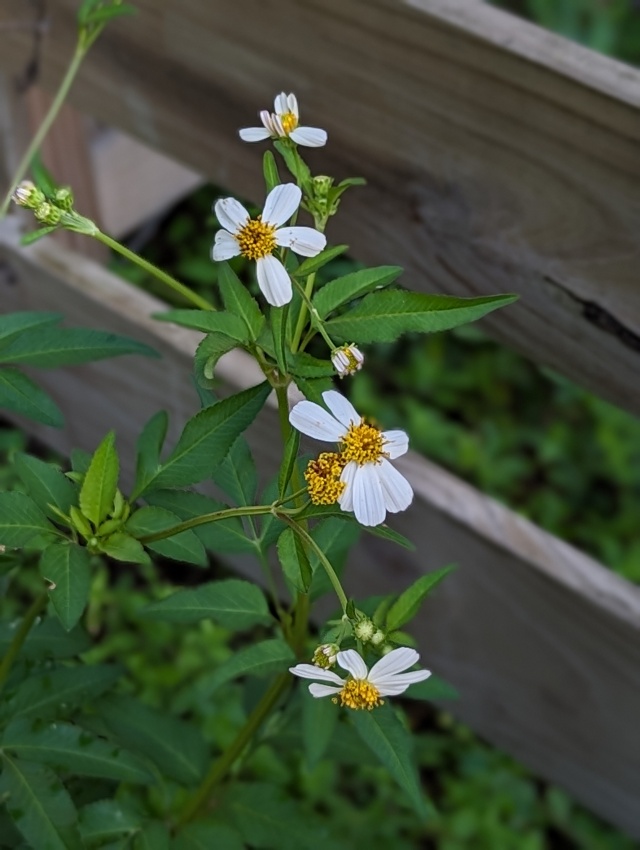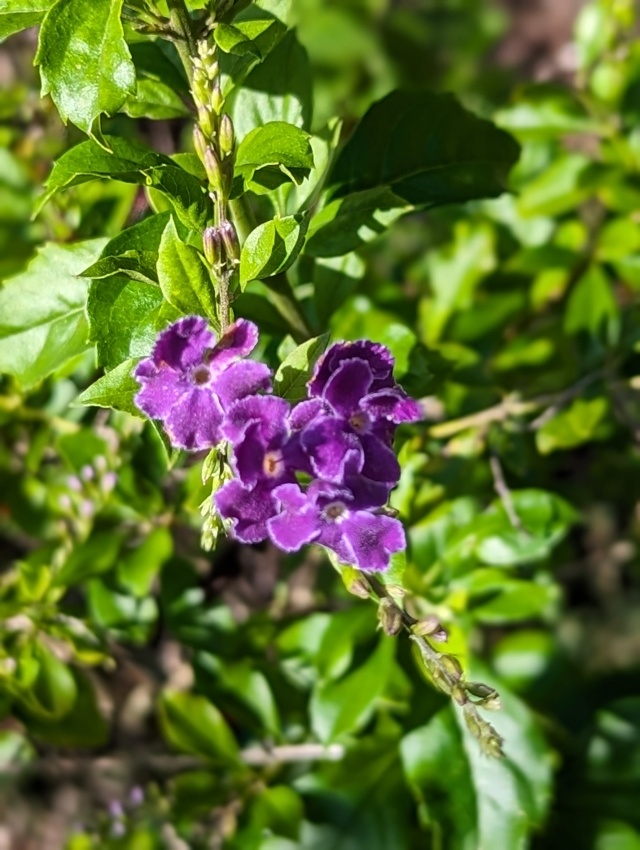It’s Saturday morning yet again. My morning tour found the more tropical members of my garden mob basking in humidity and unlike me, embracing it. The weather app on my phone had the audacity to state it was going to be six degrees colder today and 90 F. This is not colder.
Mother’s Day is tomorrow in the US. In South Florida, this is the bitter end of snowbird season and generally the advent of humidity. Coincidental? I think not. Join the international Six on Saturday garden tour at Jim’s blog, Garden Ruminations by following the link.

Dendrobium orchids installed in my Cuban avocado tree are putting out new growth after suffering with spider mites when the humidity was lower.

Flowers on the succulent shrub, Devil’s Backbone (Euphorbia tithymaloides). A native of Florida and indestructible in the right place, this one lives in partial shade and unirrigated sugar sand. It was a surprise to me that people keep these as houseplants.

Angel’s Trumpet (Brugsmania). I planted this about six months ago, not certain it would grow in my garden, but here it is! The plant has tripled in size and I am hoping for flowers. I did see the mealy bugs and they were dispatched to the great beyond after I took the picture.

Blue Daze Evolvulus. I have been wondering forever what inspires these to bloom. Possibly trimming, fertilizer and the onset of humidity? This is a sulky evergreen groundcover here.

I decided to tree form this massive coleus as it had overrun its under plantings. Has anyone else tried this?

Maybe the trunk needs to be a bit longer? I am thinking of letting the trunk gain some size and then pinching the new growth on top to make it fuller. And I have a lot of cuttings. I could start a tree form coleus farm.
That is all from my garden this Saturday. Thunderstorms are forecast and I am hoping for some rain. We are still not in the rainy season even though there is plenty of moisture in the air!
Happy Gardening!!




















































